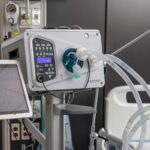Poor communication from healthcare professionals contributes to 24% of patient safety incidents and was the sole identified cause in 10% of incidents.
RT’s Three Key Takeaways
- Significant Contributor: Poor communication among healthcare professionals contributed to 24% of patient safety incidents and was the sole cause in 10%, underlining its critical role in healthcare outcomes.
- Global and Multidisciplinary Impact: The systematic review of 46 studies across five continents showed that communication failures—whether verbal, written, electronic, or nonverbal—affect all disciplines and healthcare systems globally.
- Need for Training: The findings support a strong case for evidence-based communication training throughout medical education and practice, highlighting the need for international collaboration to address this widespread patient safety risk.
Poor communication from healthcare professionals contributes to 24% of patient safety incidents and was the sole identified cause in 10% of incidents, according to a systematic review published in Annals of Internal Medicine. Researchers say the findings highlight the need for healthcare professionals to develop and maintain effective communication skills to foster relationships with peers and patients.
A team of researchers from the University of Leicester examined 46 studies including patients from Europe, North and South America, Asia, and Australia, which comprised incidents involving 67,639 patients, published between 2013 and 2024. The included studies quantified patient safety incidents, included healthcare practitioners from any discipline, and evaluated communication between health care staff and between healthcare staff and patients or caregivers.
The types of patient safety incidents measured across studies included adverse events, near misses, medical errors and medication errors. Methods of communication evaluated included verbal, written, electronic and nonverbal.
Incidents reviewed within the study include a physician who accidentally shut off a patient’s amiodarone drip while trying to silence a beeping pump. The physician failed to notify the nurse the drip was stopped, leading to the patient having a dangerously high heartbeat.
In another case, a patient died after a nurse had failed to explain to a surgeon that the patient was experiencing abdominal pains following surgery and had a low red blood cell count, which is indicative of internal bleeding. The patient later died from the hemorrhage that could have been prevented had there been adequate communication.
Overall, the review found that poor communication contributed to 25% of patient safety incidents and was the only identified cause in one in 10 incidents.
The findings suggest the need for interventions to improve patient safety through improved communication. Such interventions include policymakers commissioning evidence-based communication training to health care professionals that spans the continuum of health professions education. The authors also note that because the results are broadly comparable across cultural contexts, there is a need for shared problem-solving internationally to address the threat poor communication poses to patient safety.









